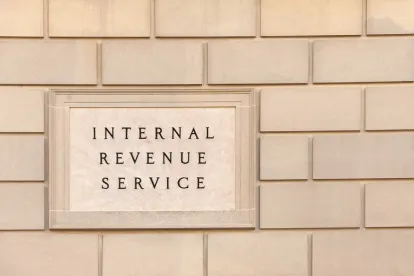This alert should interest sponsors of retirement plans subject to IRC sections 401(k), 403(b), or 457(b) that authorize hardship distributions (often called “unforeseeable emergency distributions” in 457(b) plans). This is not a general summary of the recent changes,[i] but a focused explanation of our concern with one particular aspect that could increase plan sponsor liabilities.
Cause of Concern
Among the changes made is an allowance for participants to summarize why they need the funds without providing source documents. We generally dissuade plan sponsors from using this allowance, and our concern is the same whether the plan sponsor addresses hardship distribution requests directly or has a service provider address them.
The Concerns
Our initial concern with issuing hardship distributions based on participant summaries is that this administrative convenience is not authorized by any official guidance. This convenience was created via instructions from the IRS director to retirement plan auditors in the IRS’s internal procedures (known as the Internal Revenue Manual). Since this convenience was created by the IRS informally and unilaterally, it can be changed informally and unilaterally. Similarly, since it is not formal guidance, the IRS has more leeway to implement future changes retroactively. For example, the IRS can change its instructions to its agents in 2020, issue its changes without any advanced notice to the public, and have those changes applied to all plans under examination, even if the years being examined are 2018 and 2019. The instructions allowing this convenience support our concern, stating, “This memo is effective upon the date of issuance, and should be applied to examinations open on the effective date.” Thus, this letter (dated February 23, 2017) applies to future audits and to audits of earlier years that were being actively examined by IRS agents.
Our second concern is that the ability to use this convenience requires the plan (or the provider hired by the plan to provide this service) to ask the right questions and receive the right answers. Not only does this requirement increase plan sponsor responsibilities, but the information that must be included in the summary is significant enough that we question whether preparing a summary will be more convenient for the participant. For example, in addition to some general information, a participant requesting a hardship distribution to prevent foreclosure must provide the name and address of the party pursuing the foreclosure, the date the participant received a notice of foreclosure, the amount needed to satisfy the outstanding debt, and the due date for payment. Wouldn’t it be easier for the participant to simply provide the notice of foreclosure?
Third, even though the participant is required to agree to maintain documentation supporting the hardship distribution, the plan sponsor can be penalized if the participant fails to do so. A plan using this option is required to notify the participant of its obligation to maintain those documents, and participants are required to agree to maintain those documents, but if the IRS requests that information, it will request it from the plan. If the plan is unable to obtain those documents because the participant failed to retain them, the plan sponsor now risks being treated as having issued an improper distribution. Therefore, plan sponsors using this convenience are relying on the document retention skills of their employees and former employees.
Our fourth concern is that even if the IRS does not change or update this guidance, plan auditors are directed to ignore it if any individual receives more than two hardship distributions in a year. Plan sponsors allowing summaries should consider either limiting hardship distributions to two per particpant per plan year or structuring procedures so that any participants requesting more than two hardships are required to provide full documentation instead of summaries. Implied is the fact that agents will likely request documents to substantiate the hardship if they find any other errors with hardships or documentation in general.
All of these concerns lead us to recommend that plan sponsors obtain proper documentation supporting the need for a hardship distribution at the outset, when the participant is most likely to have the documentation and be cooperative.
What You May Need to Do
If you administer hardship distributions, check plan procedures to see if they allow the summaries of source documents instead of the actual source documents. If one of your plan’s service providers administers hardship distributions, ask if they allow summaries instead of actual source documents. If your procedures or your provider’s procedures allow the use of summaries, consider revising those procedures to require source documents. Our understanding is that many service providers like the use of summaries because it is less effort initially and requires less storage. However, the plan sponsors–not the service providers–are at risk if participants ever fail to provide source documents upon request.
Cost-Benefit Analysis
Plan sponsors that currently rely on service providers to administer hardship distributions may find themselves in the position of having to compare the liabilities of administering hardship distributions themselves, paying increased fees to service providers for this service, or allowing service providers to use summaries when administering hardship distributions. We offer the following to assist you in that comparison:
- Improper distributions, including improper hardship distributions, can result in a retirement plan becoming 100 percent taxable on its vested benefits. Since this normally would be retroactive because the IRS always audits past years, it usually will trigger violations of the income and employment tax rules.
- Retirement plan service providers often can administer hardship distributions more quickly if they administer them more regularly than plan sponsors, but plan sponsors generally remain liable for service provider errors. Another benefit to using service providers is that they may avoid plan sponsors needing to communicate with participants in uncomfortable, frustrating economic situations.
- Retirement plan sponsors taking over hardship distribution administration will initially find it to be a time-consuming process, and it can lead to uncomfortable conversations with employees when hardship requests must be rejected or additional information must be requested. Developing clear hardship distribution procedures and forms can ease these burdens.
[i] Summaries of the numerous changes or enhancements to hardship distribution requirements have generally been widely-reported, so we will not reiterate them here. You are welcome!




 />i
/>i

